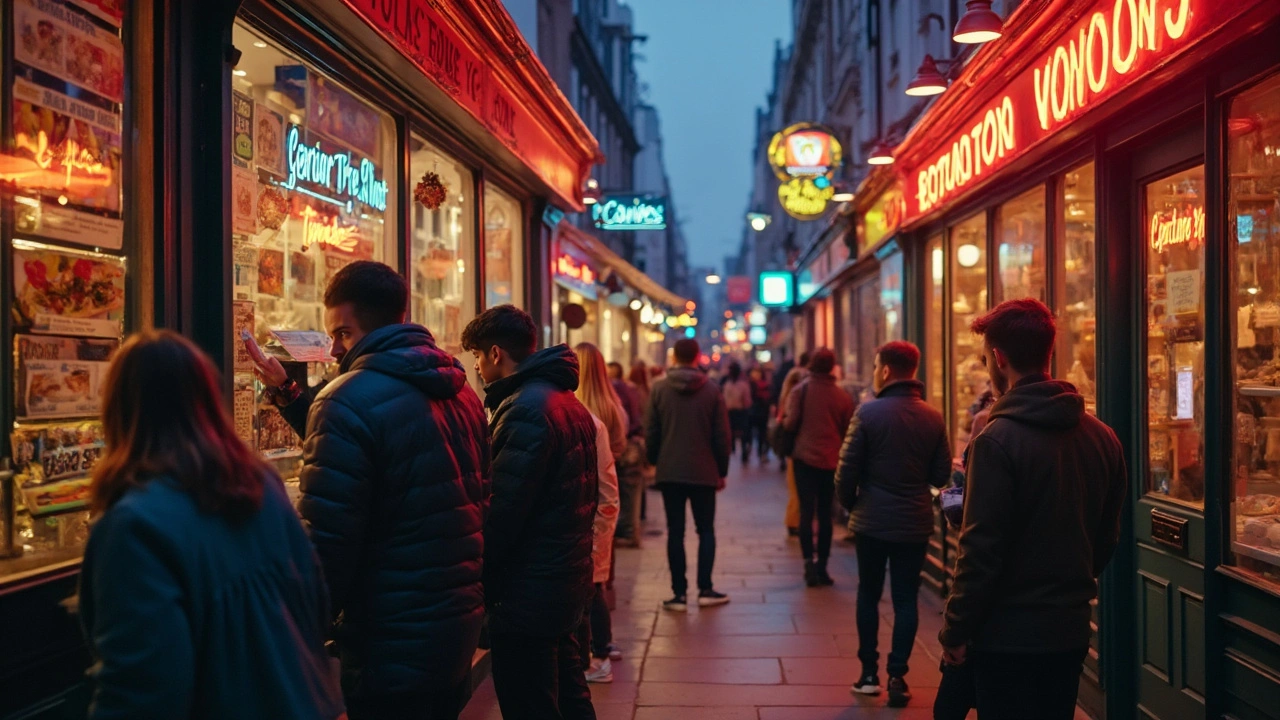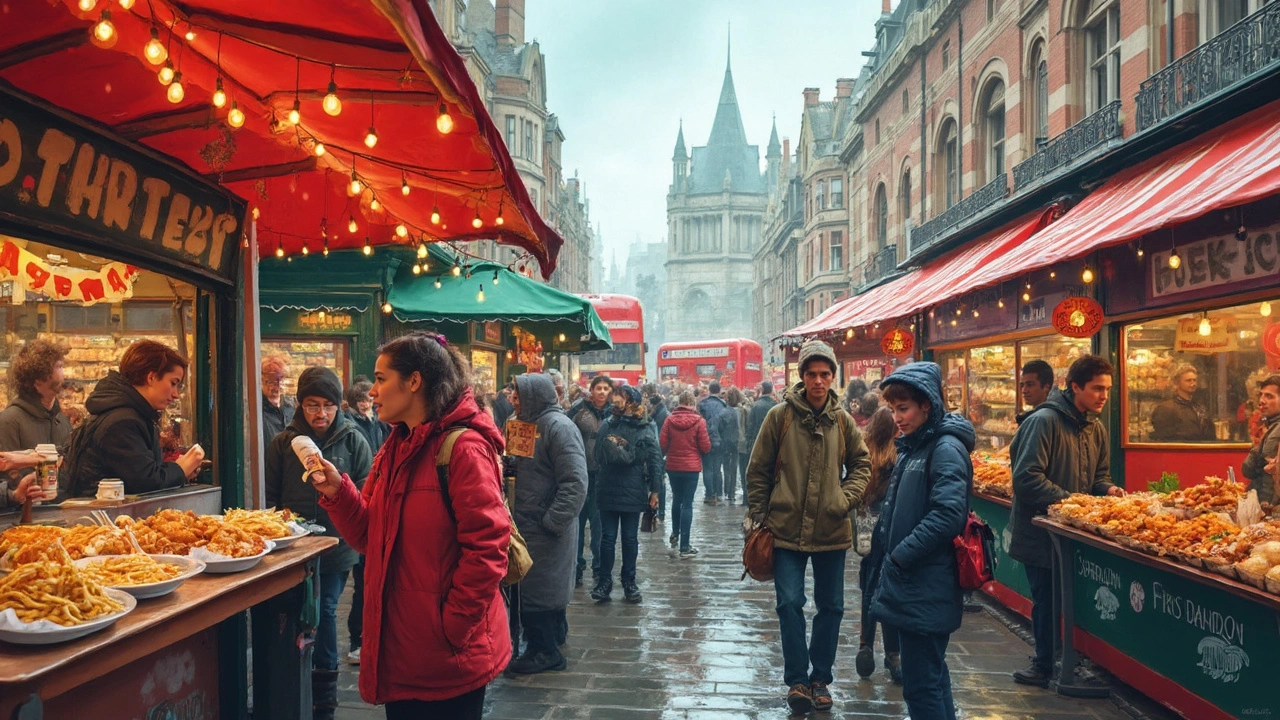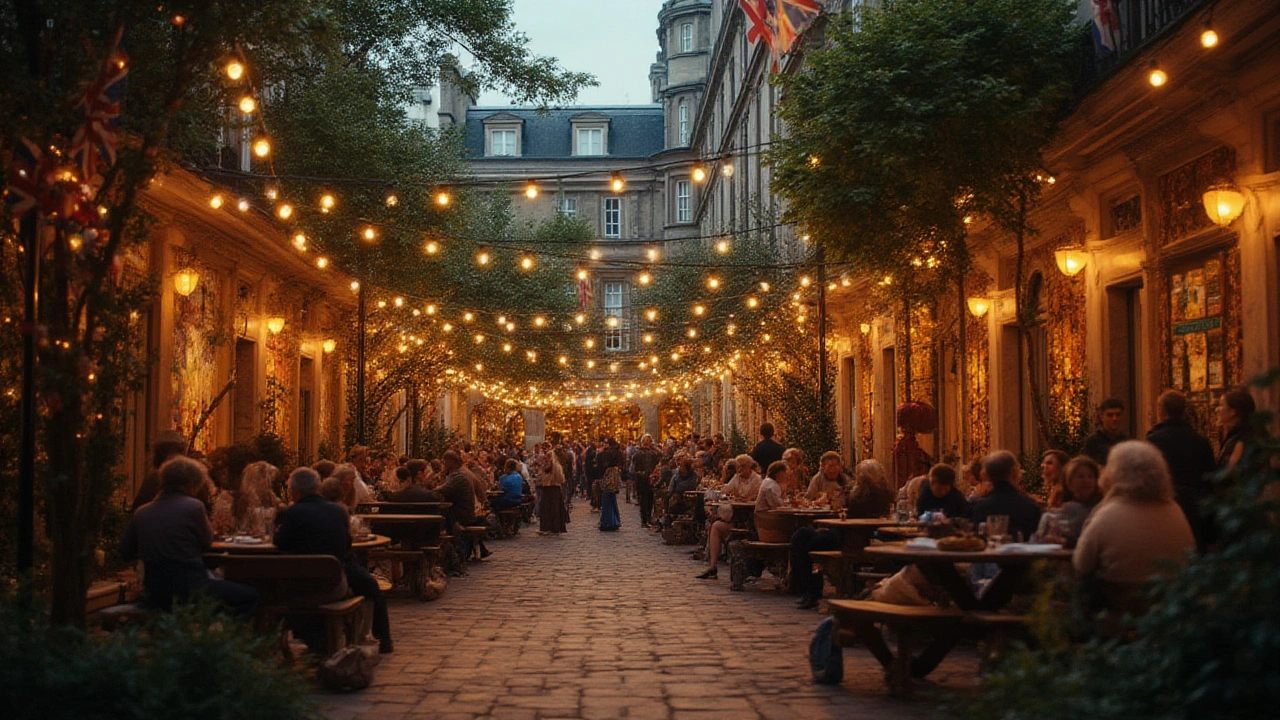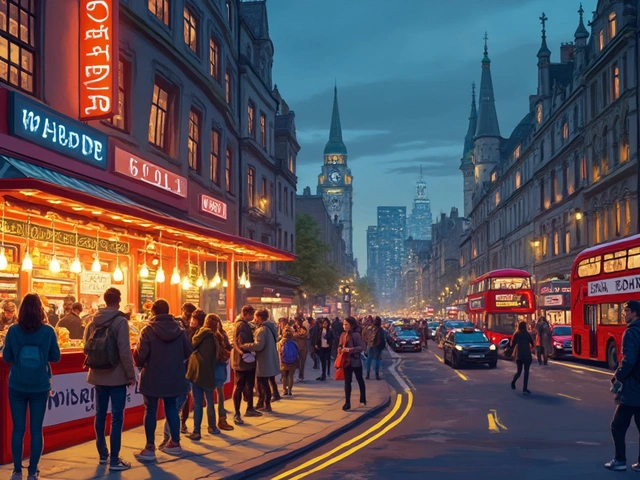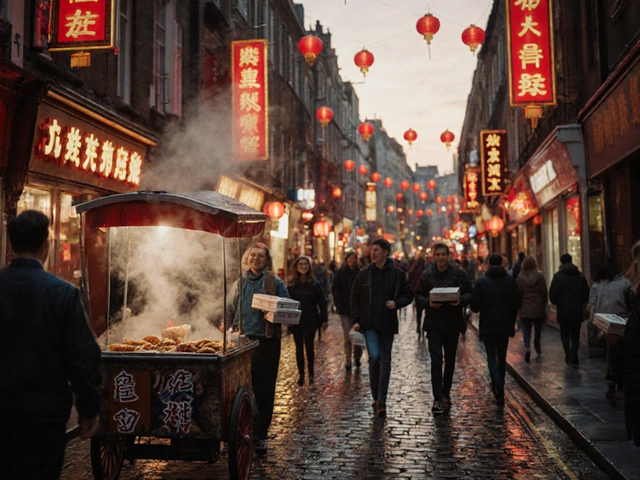
Ask anyone who’s lived in London for more than a few months, and you’ll notice something—they rarely mention Buckingham Palace or the tourist side of the city. What they talk about are the unexpected street festivals in Hackney, the jostle of Borough Market at lunch, that tiny Vietnamese spot in Hoxton, and the joyful chaos of Notting Hill Carnival. London’s true culture sits in these everyday, local experiences.
So, how do you actually experience the London that Londoners love? Start with something simple: head to a market, like Broadway Market or Brixton Village, on a Saturday morning. No need to plan a major route, just come hungry and let your senses lead you—maybe you’ll try Ethiopian coffee or pick up a jar of local honey. These markets aren’t just places to shop; they’re where you discover new music, art, and actual locals chatting about the Arsenal game or council news.
If you’re hoping to catch a bit of real life rather than just snapping photos at famous sights, think small and local. Look for community-led events like neighbourhood art walks, or drop into a pub quiz night—places where you can talk to people who know the area inside out. Skip the big chains for now, and aim for independent, quirky spots—even in Central London, they’re everywhere if you know where to look.
- London Markets: The Real City in Action
- Hidden Galleries and Street Art
- The Food Scene: Classics and Newcomers
- Local Festivals and Community Days
- Historical Walks and Unexpected Landmarks
- Everyday London: Pub Traditions and Park Life
London Markets: The Real City in Action
Markets run through London’s culture like veins—each one with its own crowd and character. If you want to see the city stripped of tourist gloss, start with hot spots where locals actually shop, eat, and hang out. The vibe on a busy market day is unbeatable, and you’ll spot everything: fresh produce, handmade crafts, trendy fashion, and food stalls you won’t find anywhere else. It’s probably the easiest way to blend into London culture while picking up something tasty or unique.
Borough Market is a no-brainer near London Bridge. It can get packed, but if you show up mid-morning on a weekday, the crowds aren’t as wild. Go for baked goods at Bread Ahead, or grab raclette from Kappacasein Dairies. They’ve been running since at least the 13th century, but don’t let the fancy history scare you—it’s still a local lunch spot when you skip the touristy hours. Nearby workers come for coffee or world street food during their break.
If you’re after a younger vibe or just want to see what’s trending, Broadway Market in Hackney is the place. Saturdays mean real buzz, with over 120 stalls. Whatever your budget, you can usually find something new, from vegan doughnuts to the famous Climpson & Sons coffee. And locals don’t just eat—they browse indie bookshops and check out mini art galleries in the lanes off the main road.
Don’t forget Brixton Village Market. Here it’s more about global food: jerk chicken from Fish, Wings & Tings, Japanese fusion at Okan, or fresh Ghanaian bites from Zoe’s Ghana Kitchen (when pop-ups appear). If you’re searching for Caribbean or African ingredients, you won’t get better options in the city thanks to Brixton’s diverse crowd.
For proper London vintage, hit Columbia Road Flower Market on Sundays. Get there before 10am or be prepared to squeeze—it’s almost like a festival by midday. It’s not just locals buying plants for their flats, either; you’ll find musicians busking, street food stands, and old-school shops selling classic Londoners’ treats like salted caramel fudge or proper sourdough bread.
Want to know what makes each market tick? Check out this side-by-side snapshot:
| Market | Main Draw | Best Time to Visit | Local Tip |
|---|---|---|---|
| Borough Market | Artisan food, street eats | Mid-morning weekdays | Try free samples early before crowds |
| Broadway Market | Indie stalls, food trends | Saturday before noon | Explore side streets for less busy gems |
| Brixton Village Market | Global street food | Weekday afternoons | Ask about off-menu dishes |
| Columbia Road Flower Market | Flowers, live music | Sunday 8-10am | Bring cash for small sellers |
The easiest tip? Don’t rush. Talk to stallholders, ask what’s new, and always try something you can’t get at home. London's real life is right here, hidden between the stalls and the chatter on market day.
Hidden Galleries and Street Art
You can walk down a random street in East London and stumble on art you’d pay to see elsewhere. Shoreditch and Brick Lane are like open-air museums, where pieces from big names like Banksy can seriously just pop up next to a chicken shop. You don’t need to pay a fee or book a ticket—just keep your eyes open on curtain-sided buildings, doorways, and even fences. Want to learn the stories behind the murals? Free walking tours like Strawberry Tours offer local guides who’ll show you spots you never knew existed. Some tours are pay-what-you-can, so cost doesn’t have to be a problem.
But street art is only half the story. Tucked down alleys and behind regular shop fronts are some of London’s best hidden galleries. Take the Whitechapel Gallery—it’s just off the main drag, but people often walk right past it. They run free art exhibitions and workshops, sometimes with the artists themselves. In Soho, Lazinc and Riflemaker pop up with exhibits from fresh talent and famous names, but you have to check their socials for what’s on.
If you’re in Peckham, climb up to Bold Tendencies—yes, it’s in a multistorey car park. It’s known for cutting-edge installations, usually in summer, and you get killer sunset views over London as a bonus. For more underground vibes, try 5th Base Gallery on Heneage Street (the name’s literally a play on “first base”—it’s tiny but always surprising).
Here’s how to make the most of London’s cultural experiences in art:
- Download apps like Street Art Cities to hunt out pieces and track what changes on your next visit.
- Don’t just stick to the famous spots—explore Hackney Wick or Leake Street Graffiti Tunnel near Waterloo for less crowded, but just as creative, walls.
- Follow #LondonStreetArt or check Time Out for last-minute gallery openings, as a lot of spaces only announce events a few days before.
These hidden corners and colourful walls add grit and personality to London. Whether you’ve lived here forever or just landed, you’ll literally see the city in a new light.
The Food Scene: Classics and Newcomers
London’s food scene is basically a living history lesson on a plate. You’ll find old-school dishes, street food stalls, Michelin spots, and family-run joints all scrapping for your lunch money. The city has more than 18,000 restaurants, covering every taste and budget you can think of. Since 2024, about a third of all new food businesses have been pop-ups or food trucks—so something exciting is always cooking.
Start with the real classics. Go for a salt beef bagel at Beigel Bake on Brick Lane—open 24 hours, this place has been serving Londoners since 1974. If you’re near Soho, the wood-paneled booths at Rules (Covent Garden) are as old as it gets, with pies and puddings done the same way for over two centuries. And, yes, you should have fish and chips at least once, but go somewhere that cares about the batter, like Poppies in Spitalfields or Kerbisher & Malt in Brook Green.
But here’s the secret: the London food scene really shines when you wander off the main road. Newcomers are everywhere, from Sri Lankan hoppers at Hoppers (Soho), Nigerian jollof rice at Chuku’s in Tottenham, to Filipino ube treats at Mamasons Dirty Ice Cream in Camden. Chicken shops are a London way of life—Morley’s or Chicken Cottage has fed everyone from college students to night shift workers for decades.
- Want a food market adventure? Head to Mercato Metropolitano in Elephant & Castle. You’ll eat your way through dozens of global cuisines under one roof.
- Craving something sweet? Bread Ahead in Borough Market is famous for its doughnuts—queues are totally normal.
- Vegan or just want less meat? Check out Mildreds (several locations) or Club Mexicana in Shoreditch.
- Dive into street food at Dinerama in Shoreditch, or try the legendary fried chicken at Mother Clucker.
Lately, you’ll notice a rise in supper clubs and chef’s tables—basically, small groups eating set menus in someone’s home or hidden space. It’s a killer way to meet locals and taste dishes you won’t find anywhere else. You can find current listings on sites like Grub Club or Eventbrite.
| Spot | What To Try | Nearest Tube |
|---|---|---|
| Beigel Bake (Brick Lane) | Salt beef bagel | Aldgate East |
| Chuku’s (Tottenham) | Jollof rice, small plates | Tottenham Hale |
| Bread Ahead (Borough Market) | Doughnuts | London Bridge |
| Mercato Metropolitano (Elephant & Castle) | World street food | Elephant & Castle |
| Mamasons Dirty Ice Cream (Camden) | Ube ice cream | Camden Town |
Tip: It’s rare that you’ll need to dress up anywhere in London besides swanky hotel bars—most local favourites are casual. Try to visit new places during the week or outside peak lunch hours. That’s when you’ll avoid long queues and have a better chat with the staff.

Local Festivals and Community Days
There’s nothing quite like a London festival to make you feel part of something bigger. Some of these events are world-famous—think Notting Hill Carnival, which draws up to two million people every August, making it the biggest street party in Europe. But plenty of others are local affairs, rooted in neighbourhood pride and run by volunteers who just want to bring people together.
One date worth circling is Open House London every September. You’ll get free access to more than 800 buildings—historic mansions, futuristic offices, and architectural oddballs. Book early for popular spots like the BT Tower, which opened up for the first time since 1981 a few years back.
If you want to hang out like a true Londoner, check your local council’s website for community days, street parties, and park festivals. For example, Lambeth Country Show in Brockwell Park is a classic. You’ll see vegetable competitions (yes, people really do show off giant onions), reggae bands, and food stalls serving everything from Caribbean goat curry to vegan falafel.
London also does themed festivals like Pride in July—last year over 1.5 million people came out to march, dance, and listen to free live music—plus Southbank Centre’s Meltdown Festival, which is always curated by someone big in the music scene. Don’t miss the Thames Festival in September with fireworks and night markets along the river.
Here’s a quick breakdown of some annual highlights and typical visitor numbers:
| Festival/Event | Location | Month | Estimated Attendance |
|---|---|---|---|
| Notting Hill Carnival | Notting Hill | August | 2,000,000 |
| Pride in London | Central London | July | 1,500,000 |
| Lambeth Country Show | Brockwell Park | July | 150,000 |
| Open House London | Citywide | September | Open access |
| Thames Festival | South Bank/Thames | September | 500,000+ |
Want to make the most of these London culture events? Here are a few tips:
- Festivals fill up fast, so travel early or use public transport—the Tube runs extra services for big days.
- Most events are free to attend, but food stalls and workshops can get pricey—bring cash for small vendors.
- Check neighbourhood notice boards or local Facebook groups for pop-up happenings not listed on big festival calendars.
- If you’re after quieter vibes, smaller local festivals like Bermondsey Carnival or Ealing Blues Festival usually offer cozy crowds and a more chilled energy.
London never really goes quiet, whatever the season. Whether you’re here for a weekend or a lifetime, dive into these community days, and you’ll start feeling like a part of the city’s beating heart.
Historical Walks and Unexpected Landmarks
There’s way more to London’s history than Tower Bridge selfies and the Changing of the Guard. Some of the city’s most interesting stories pop up when you take a walk, especially if you know where to look. London’s real character shows up in old lanes, quirky corners, and the odd statue that no one is quite sure about.
If you fancy mixing fresh air with a history lesson, head to Clerkenwell or Spitalfields. Walk along Fleet Street and you’re following a path printers, journalists, and Samuel Pepys all used. If you end up near Smithfield Market, check out St. Bartholomew-the-Great – London’s oldest surviving church, hidden behind a gate most people walk past. It’s been there for nearly 900 years.
Ever noticed the blue plaques scattered around? They’re real-life time machines, marking spots where legends—like Virginia Woolf or Jimi Hendrix—lived or worked. Keep an eye out on Fitzrovia or Chelsea backstreets, where it feels like half the city’s creative brains once hung out.
- Try the Brunel Museum’s Thames Tunnel walk in Rotherhithe. It’s an underground adventure, and the tunnel once nearly bankrupted the inventors who built it in the 1800s.
- Go ghost-hunting in Highgate Cemetery, where you’ll spot Karl Marx’s gravestone and, if you’re lucky, a fox or two.
- For a proper hidden gem, find Postman’s Park near St. Paul’s—a peaceful corner full of plaques for regular Londoners who did brave things.
Don’t skip the unexpected stuff. For example, in the middle of a Hackney housing estate, you’ll run into Sutton House—a Tudor house that feels plucked out of history, complete with wood-panelled rooms and a small café.
| Walk/Landmark | Location | Special Tip |
|---|---|---|
| St. Bartholomew-the-Great | Smithfield | Go early to avoid wedding crowds |
| Blue Plaque Hunt | Fitzrovia/Chelsea | Download the official blue plaque app |
| Thames Tunnel Tour | Rotherhithe | Check for tour dates in advance |
| Highgate Cemetery | Highgate | Book guided tours — they sell out |
| Postman’s Park | Near St. Paul’s | Pack a sandwich for a peaceful lunch |
This kind of walk lets you imagine what London felt like long before today’s buses and Pret shops. Tie on some comfy shoes, stay curious, and you’ll find stories most tourists completely miss. If you’re really into London culture, nothing beats seeing these spots on foot. Sometimes the city’s best stuff is hiding right in front of you.
Everyday London: Pub Traditions and Park Life
If you really want to get under the skin of London, skip the Instagram walks and give yourself an afternoon to just hang out at a local pub, then wander off into a park. Sounds basic, but honestly, this is where the real city shows itself.
Pubs in London aren’t just about drinking—they’re like the city’s social living room. There are nearly 3,500 pubs across Greater London. Some, like The George Inn near London Bridge, have been pulling pints since Shakespeare was alive. Fancy taking part in a pub quiz? Head to The Queen’s Head in King’s Cross, where trivia nights get seriously competitive. If you’re there on a Sunday, try a roast dinner at The Spaniards Inn—this Hampstead classic is packed with families, locals, dogs, and the odd celebrity, especially when the weather’s good.
Most Londoners have a local pub—they’ll even call it “my local” as if it’s a badge of honour. Here’s how you can blend in:
- Order at the bar (don’t wait for table service except in gastropubs).
- If you want crisps with your pint, ask for "pub snacks"—options range from simple Walkers to Scotch eggs and pork pies.
- Look for events: quiz nights, comedy, or the rare but epic karaoke battles.
While it might be tempting to stick to central spots, some of London’s real gems are slightly off the tourist trail. The Faltering Fullback in Finsbury Park is famous for its leafy, multi-story beer garden, and The Mayflower in Rotherhithe claims to be the oldest river pub in London, complete with stunning Thames views.
And let’s not forget the park life. London is nearly 50% green space, so there’s always a place to sprawl out or kick a ball. Hyde Park, Regent’s Park, and Hampstead Heath are favourites, but don’t miss out on smaller neighbourhood parks like Clissold Park or Brockwell Park, where you’ll find open-air swimming in summer and impromptu yoga or cricket sessions almost year-round.
Check out this quick comparison of some top London parks:
| Park | Main Features | Local Tip |
|---|---|---|
| Hyde Park | Serpentine Lake, Speakers’ Corner | Boating or open-air concerts in summer |
| Regent’s Park | London Zoo, rose gardens | Climb Primrose Hill for panoramic skyline views |
| Hampstead Heath | Woodland walks, swimming ponds | The mixed bathing pond is a year-round London fitness experience |
| Clissold Park | Café, animal enclosures, ponds | Family picnics, football, deer-watching |
| Brockwell Park | Outdoor lido, community garden | Check the park’s festival calendar every summer |
Joining in on London culture through its pubs and parks makes you feel like part of the city, no matter where you’re from. So next time you finish work or get a few hours of sunshine, skip the queue at Covent Garden and try living life just like a local does—pint in hand, picnic blanket at the ready, and no rush to do anything except take it all in.
Categories
Popular Articles

May 15 2025
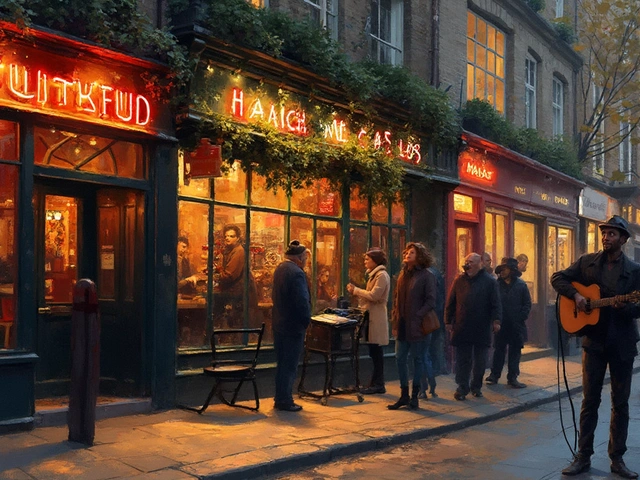
Feb 7 2025

